Asus Chromebox 5 Mini PC review: A modern Chromebox with a wireless charger
Asus' latest Chromebox is a thoroughly grown-up affair with a 15W wireless charger and a P-Series Alder Lake CPU
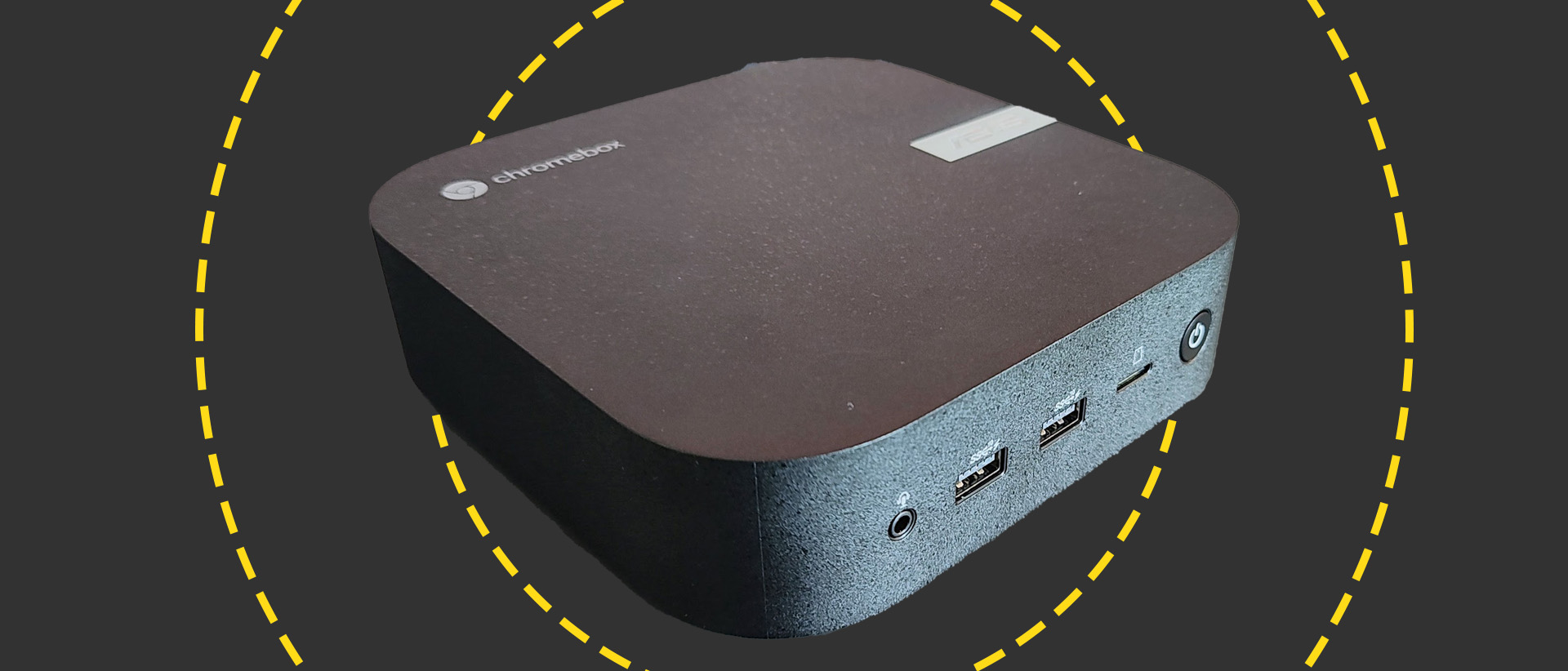
-
+
12th generation Alder Lake CPU
-
+
Built-in 15W wireless charger
-
+
A comprehensive range of ports inc Thunderbolt 4
-
+
Runs Android and Linux apps
-
-
Core i5 and i7 models are rather expensive
-
-
Slow SSD read and write speeds
-
-
Zero upgradability

The Asus Chromebox 5 is the company's fifth iteration of its desktop ChromeOS solution, and it's reasonable to say that it marks the point at which it has entered the world of contemporary computing technology rather than being offered with the sort of components you'd have seen in a desktop or laptop three or four or more years ago.
READ MORE
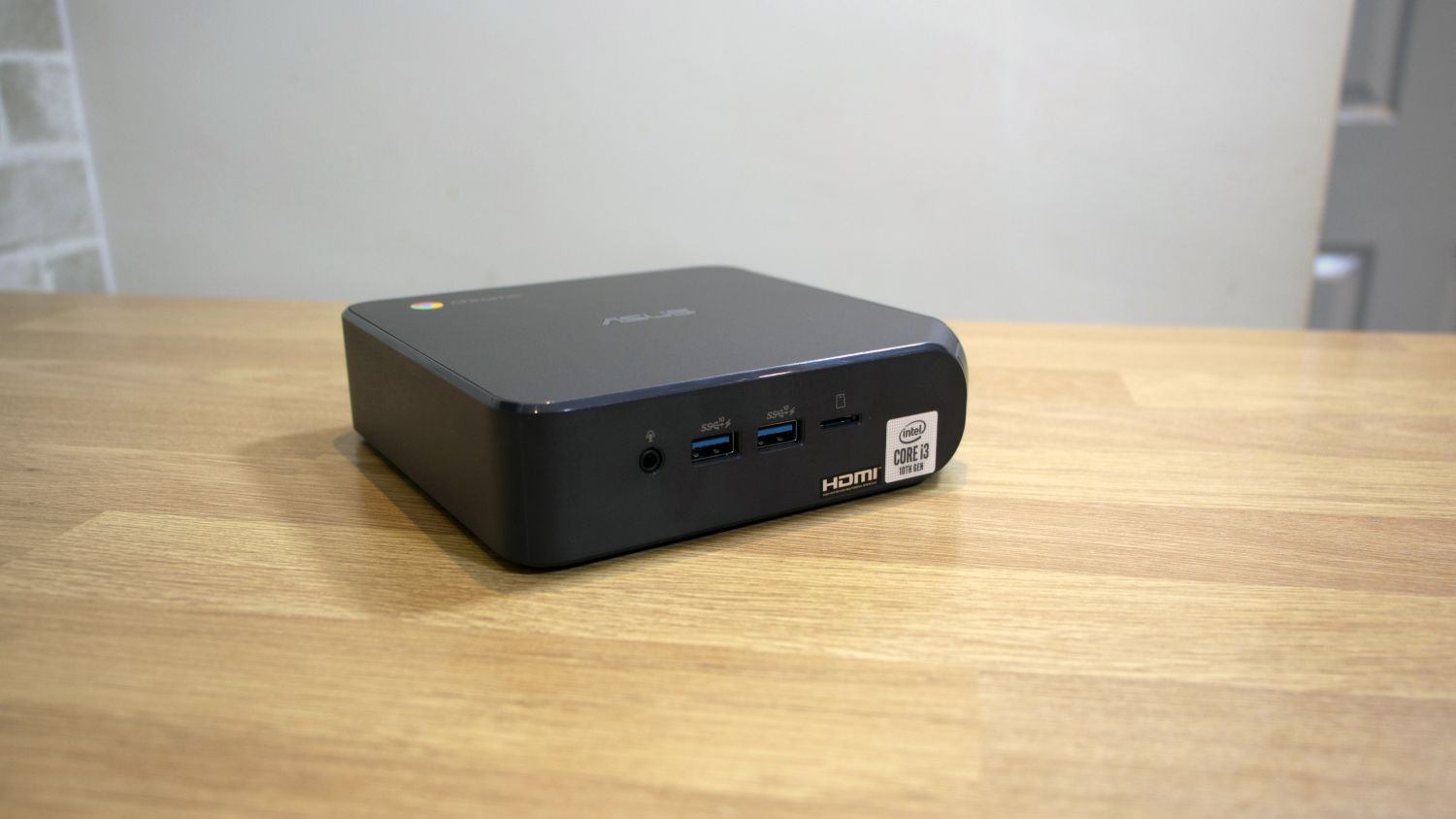
The Asus Chromebox 4 could be purchased with either a 10th generation i3, i5, or i7 CPU or at 5205U Celeron. Asus has moved with the times for the new model and now offers a selection of 12th-generation Alder Lake chips (i3-1220P, i5-1240P, i7-1260P) or a quint-core Celeron 7305. Granted, that's still not the latest silicon, but it's more up-to-date than is generally offered in desktop ChromeOS systems.
Which model you go for largely depends on what you plan on using it for. Even the Celeron model with its single-performance core should easily handle basic web browsing, something even a trusty old Celeron N4020-powered HP Chromebook can manage. But if you plan on heavier use, especially using Linux apps, then the i5 or i7 models are the ones you want.
Asus Chromebox 5 Mini PC: Design
The Chromebox 5 is a pretty anonymous black plastic box measuring 166.5 x 165.8 x 45.9 mm and weighing 800g. The various ports are divided between the front and back; the only exhaust grill is at the back. It has Asus and Chromebox badges on the top, and the matte plastic top doesn't show fingerprints. That's really all there is to say about it. The most interesting design feature is completely invisible: the 15W Qi wireless charger at the top. Building a wireless charger into a small desktop is a great idea.
The Chromebox 5 quickly became our default home for our smartphone, each morning we started by dropping a Motorola on top of the Asus Chromebox to charge. We'll miss the wireless charger part of the deal when it returns to the Asus press office.
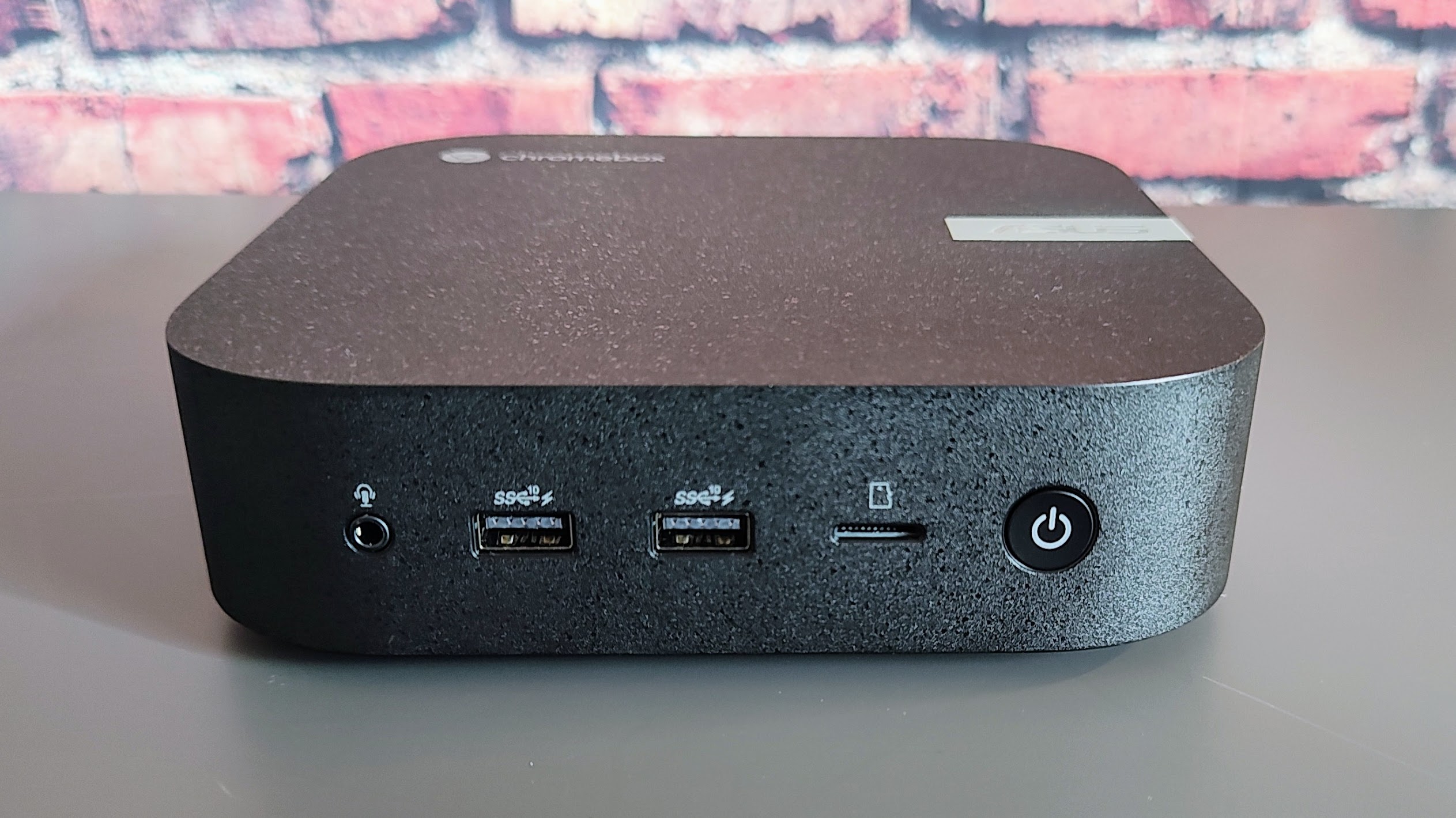
Asus includes a VESA mount in the box with the Chromebox 5, but given that mounting it vertically makes the charging pad useless, I can't see it getting a lot of use.
The Chromebox 5 has a good array of ports. On the front, you will find 2 USB-A 3.2 Gen 2 (10Gpbs) ports, a MicroSD card reader, and a 3.5mm audio jack. At the back are another two USB-A ports, again 10Gpbs, a brace of HDMI 2.1 ports, DisplayPort 1.4 and Thunderbolt 4 ports, and a 2.5G RJ-45 LAN port.
Sign up today and you will receive a free copy of our Future Focus 2025 report - the leading guidance on AI, cybersecurity and other IT challenges as per 700+ senior executives
RELATED RESOURCE

Build scalable applications that will perform on the web and mobile devices.
DOWNLOAD NOW
The power button is on the front, while the DC-in for the 150W power supply is at the back. There's a Kensington security lock on the right-hand side, and just in case things really go pear-shaped, there is a small reset hole in the back panel. Wireless connectivity is as up-to-date as wired, with 6GHz Wi-Fi 6E and Bluetooth 5.3 support.
There are no exposed screw heads on the Chromebox 5, so opening it up is impossible. That's a bit of a shame, as we'd have liked to see if there was the opportunity to swap out the 256GB SSD or add a second, though we realize this is getting a bit beyond the Chromebox comfort zone.
The SSD in our review machine was certainly no speed demon, recording average sequential read and write speeds of just 1,939MB/s and 378MB/s, respectively. Incidentally, the 256GB SSD in the Chromebox 5 is PCIe 4.0 standard, while the 128GB model is PCIe 3 and so likely to be even slower.
Asus Chromebox 5 Mini PC: Performance
The Intel Core i7-1260P chip is a 12-core affair, 8 being what Intel calls efficiency cores and 4 performance cores. It can run at a maximum boost speed of 4.7GHz. That's more than ample power for ChromeOS, no matter how many browser tabs you have open.
Running the GeekBench 5 test in the Linux environment, the Chromebox scored 1645 in the single-core test and 7308 in the multi-core test, which is a solid result and comparable to the scores you'd get from the likes of an M1 Apple MacBook Air.
Given how little processor grunt is needed to run ChromeOS or most Android apps, the extra power the Core i7 CPU brings to the party only becomes useful when running Linux programs like Gimp or Handbrake. A couple of hours working with both showed that the Core i7 Chromebox 5 has enough performance to get through even quite demanding tasks without bogging down.
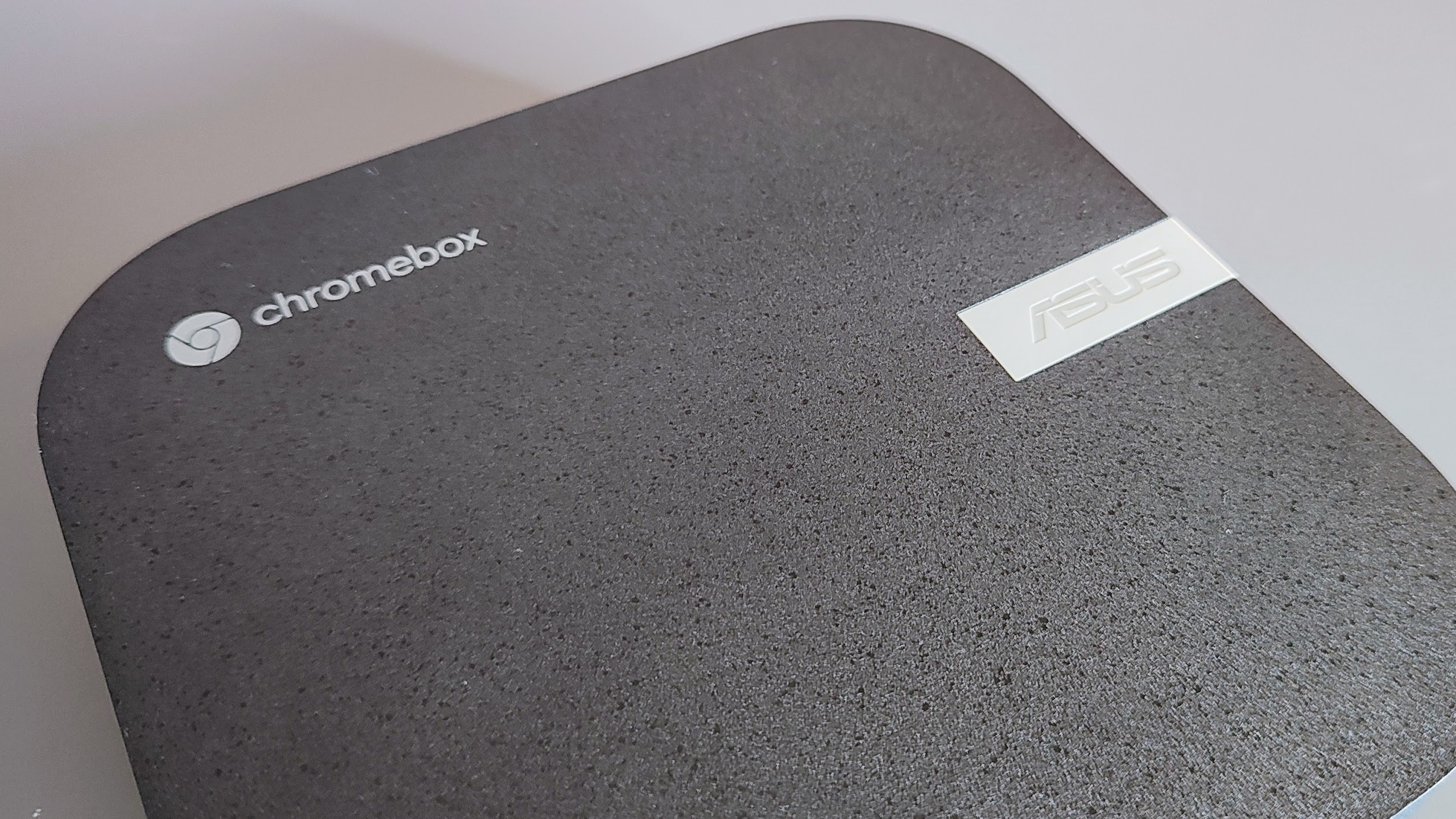
The same is true of running multiple high-definition monitors, a feat many Chromeboxes are technically capable of but struggle with in the real world. Luckily, I had several such monitors in the office, and the Chromebox 5 easily ran two 4K and two QHD panels without any dropped frames.
With graphics managed by Intel's Iris XE integrated GPU, you won't be doing any 3D modeling or running games like Returnal on the Chromebox 5, but less demanding titles like Tombraider and the 2016 Doom reboot can be coaxed to play at around 50fps at 1,280 x 720, the former under Steam for Linux the latter under the beta Steam for Chrome Proton emulation.
Using the 3DMark app to stress test the Chromebox 5, I could hear the cooling fan run but only with my head right up alongside it. In anything other than a perfectly tranquil environment, the Chromebox 5 is effectively silent.
Asus Chromebox 5 Mini PC: Is it worth it?
The basic Celeron 7305 model of the Chromebox 5 will set you back £290 ($400) ex VAT, but for that low price, you must make do with just 4GB of RAM and a 128GB SSD. The Core i3 model comes in at £375 ex VAT, while the Core i5 machine is priced at £582, with 8GB of RAM and a 128GB SSD. The i7 model is rather more generously specified with a 256GB SSD, 16GB of RAM, and the Iris XE iGPU and will set you back £640 ex VAT.
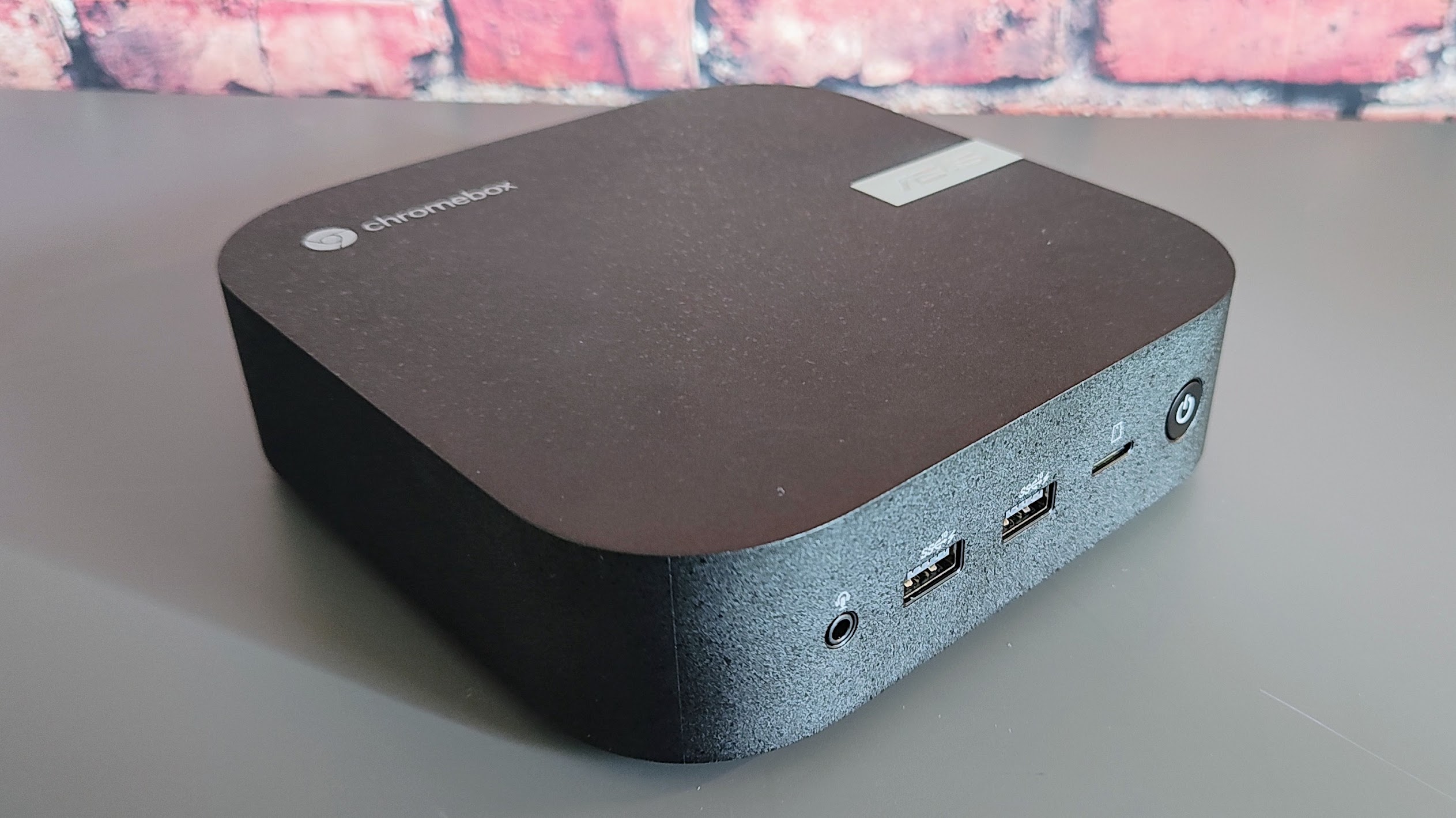
Regarding competition, there isn't much to mention, as neither HP, Acer, nor Lenovo currently list any of the Chromeboxes they sell in the USA on their UK websites. Acer's CX 15 Chromebox can be found in retail channels for £457 ex VAT for a model with a Core i5-1235U processor and 8GB of RAM, which makes it broadly comparable with the new Asus lineup but it doesn't have a wireless charge pad.
That leaves the new Asus as the pick of the bunch by default, but don't let that worry you. Even if the competition were readily available around the world, we'd still say the Chromebox 5 was the pick of the crop.
Asus Chromebox 5 Specifications
| Processor | Intel Core i7-1360P 10-core, 5GHz |
| GPU | Intel Iris Xe integrated graphics |
| RAM | 16GB DDR4 |
| Ports | HDMI 2.1 x 2, DisplayPort 1.4 x 1, Thunderbolt 4 x 1, USB-A 3.2 Gen 2 x 4, RJ45 x 1, MicroSD card slot x 1 |
| 3.5mm audio jack | Yes |
| Storage | 256GB M.2 NVMe PCIe 4.0 SSD |
| Wi-Fi | 6GHz Wi-Fi 6E (802.11ax) |
| Bluetooth | v5.3 |
| Weight | 800g |
| Dimensions | 166.5 x 165.8 x 45.9mm |
| Operating System | ChromeOS / Linux |
Over the years, Alun has written freelance for several online publications on subjects ranging from mobile phones to digital audio equipment and PCs and from electric cars to industrial heritage. Before becoming a technology writer, he worked at Sony Music for 15 years. Quite what either occupation has to do with the degree in Early Medieval History he read at the University of Leeds is a bit of a grey area. A native of Scotland but an adopted Mancunian, Alun divides his time between writing, listening to live music, dreaming of the glens and dealing with an unhinged Norwegian Elkhound. For ITPro, Alun reviews laptops and PCs from brands such as Acer, Asus, Lenovo, Dell and HP.
-
 Nutanix wants to help customers shore up cloud sovereignty
Nutanix wants to help customers shore up cloud sovereigntyNews New automation tools and infrastructure management capabilities look to tackle single-vendor dependency and shore up sovereignty requirements
By Ross Kelly Published
-
 The NCSC touts honeypots and ‘cyber deception’ tactics as the key to combating hackers — but they could ‘lead to a false sense of security’
The NCSC touts honeypots and ‘cyber deception’ tactics as the key to combating hackers — but they could ‘lead to a false sense of security’News Trials to test the real-world effectiveness of cyber deception solutions have produced positive results so far
By Emma Woollacott Published
-
 Can data center supply keep up with AI demand?
Can data center supply keep up with AI demand?News New research from Goldman Sachs points to a precarious balancing act for data center operators
By Emma Woollacott Published
